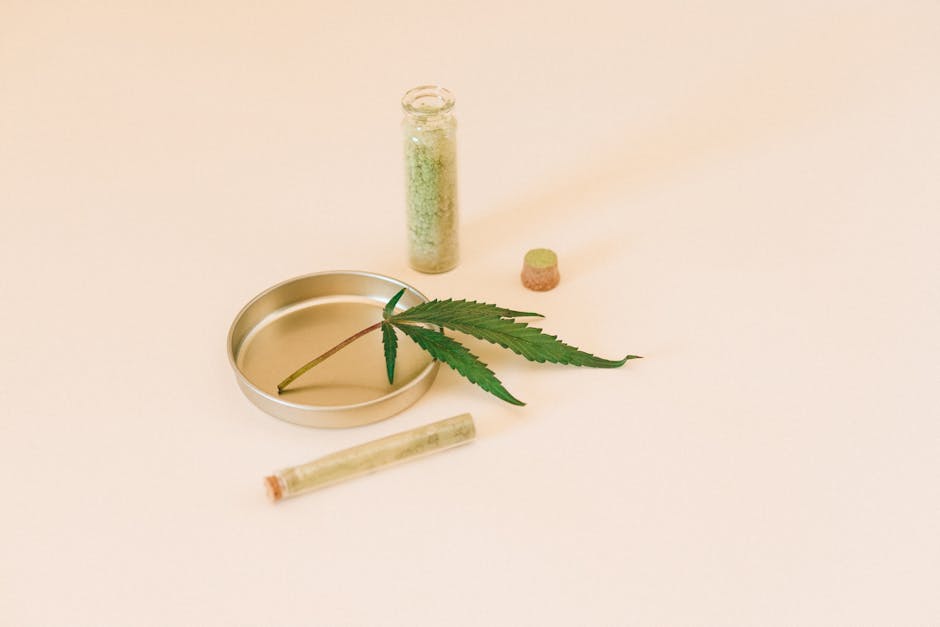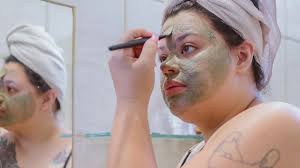Get Your AI Analysis
Personalized skincare insights
Discover your perfect skincare routine with our AI-powered analysis. Get personalized recommendations for glowing, healthy skin.
Start AnalysisFollow Us
Stay updated with the latest skincare tips, trends, and expert advice.
Mastering Oil Production: Green Tea Extracts for Balanced, Radiant Skin
As a seasoned skincare professional with over a decade of navigating the complex world of dermatology and beauty trends, I've seen countless ingredients rise and fall. But few have maintained their revered status quite like green tea extracts. For anyone battling the relentless shine, enlarged pores, and persistent breakouts that come with oily skin, green tea isn't just a trend—it's a game-changer. Today, we're diving deep into how this ancient botanical marvel can naturally regulate sebum production, leaving you with a balanced, healthy complexion.
Oily skin is a common concern, affecting a significant portion of the population. Excess sebum, the natural oil produced by our sebaceous glands, can lead to a greasy complexion, clogged pores, and an increased likelihood of acne. While it might seem like a constant uphill battle, the solution often lies in understanding and working with your skin's natural biology, rather than against it. Stripping the skin with harsh products can ironically trigger more oil production, a phenomenon known as the rebound effect. This is where green tea extracts shine, offering a gentle yet profoundly effective approach.

The Science Behind the Calm: EGCG and Polyphenols
At the heart of green tea's remarkable efficacy for oily skin lies its rich concentration of polyphenols, particularly a powerful catechin called Epigallocatechin Gallate, or EGCG. These compounds are potent antioxidants that do more than just fight free radical damage; they play a crucial role in managing sebaceous gland activity.
Research has consistently shown EGCG to be a key player in regulating sebum production. A study published in the Journal of Cosmetic Dermatology highlighted that EGCG topical application significantly reduced sebum excretion rates in individuals with oily skin. This isn't about drying out your skin; it's about re-calibrating its natural balance. EGCG works by inhibiting the activity of 5-alpha-reductase, an enzyme that converts testosterone into dihydrotestosterone (DHT), a hormone known to stimulate sebum production. By modulating this pathway, green tea extracts help to naturally diminish the signals that tell your sebaceous glands to go into overdrive.
"Green tea extract, especially its EGCG component, offers a multi-faceted approach to oily skin. Not only does it help reduce sebum production by modulating hormonal pathways in the skin, but its anti-inflammatory and antioxidant properties simultaneously soothe irritation and protect against environmental damage. It's a truly holistic ingredient for skin health."
— Dr. Lena Hansen, Board-Certified Dermatologist
Beyond its direct impact on sebum, green tea's polyphenols exhibit strong anti-inflammatory properties. Oily skin types are often prone to inflammation, which can exacerbate acne and redness. By calming inflammatory pathways, green tea helps create a healthier skin environment, reducing the likelihood of breakouts and promoting a more even skin tone. Moreover, its antioxidant power provides robust protection against oxidative stress caused by UV radiation and pollution, which can otherwise damage skin cells and contribute to premature aging.
Integrating Green Tea into Your Skincare Routine
The beauty of green tea extracts lies in their versatility. They can be found in various skincare formulations, making it easy to incorporate this powerhouse ingredient into your daily regimen. Consistency is key when addressing oil production, so choose products you enjoy using.

Key Green Tea Product Types for Oily Skin:
Green Tea Toners: Ideal for the first step after cleansing, a green tea toner helps to balance the skin's pH, remove any residual impurities, and deliver an initial dose of antioxidants and sebum-regulating compounds. Look for alcohol-free formulas to avoid stripping the skin. A great example is the Innisfree Green Tea Seed Serum (which can be used as a pre-serum toner) or the Paula's Choice CALM Nourishing Milky Toner which contains green tea.
Green Tea Serums: Serums typically contain higher concentrations of active ingredients, making them highly effective for targeted treatment. A green tea serum can deliver a potent dose of EGCG directly to the sebaceous glands, maximizing oil control and antioxidant benefits. Consider the Glow Recipe Avocado Ceramide Redness Relief Serum, which surprisingly contains matcha (a form of green tea), or a dedicated green tea serum from brands like Dr. Different or Purito.
Green Tea Moisturizers: Even oily skin needs hydration! A lightweight moisturizer infused with green tea extracts can provide essential moisture without feeling greasy, while continuing to regulate oil throughout the day or night. This prevents the skin from overcompensating and producing even more oil. The Klairs Fundamental Water Gel Cream is a fantastic option with green tea extract.
Green Tea Masks: For an intensive treatment, a green tea-infused clay or sheet mask can offer a concentrated burst of benefits, helping to detoxify pores and absorb excess oil. Use 1-2 times a week.
What to Look For in Green Tea Products:
When selecting green tea products, scrutinize the ingredient list. Look for terms like Camellia Sinensis Leaf Extract (the scientific name for green tea). The closer it is to the top of the ingredient list, the higher its concentration. Also, opt for products packaged in opaque, air-tight containers to protect the delicate polyphenols from degradation due to light and air exposure.
While green tea is generally well-tolerated, starting with one new product at a time allows you to observe how your skin reacts. Patch testing is always a good idea, especially if you have sensitive skin.
The Holistic Approach: Beyond Topical Application
While topical green tea extracts are highly effective, it's essential to remember that skin health is intrinsically linked to overall well-being. A holistic approach can significantly enhance your results in controlling oil production.
Actionable Tips for Oily Skin Management:
Gentle Cleansing: Use a mild, pH-balanced cleanser twice daily. Over-washing or using harsh cleansers can strip your skin and ironically stimulate more oil production.
Diet and Hydration: A diet low in refined sugars and processed foods, coupled with adequate water intake, can positively impact skin health. Some studies suggest a link between high glycemic index foods and increased sebum production.
Stress Management: Stress can trigger hormonal fluctuations that lead to increased oil production. Incorporate stress-reduction techniques like meditation, yoga, or regular exercise into your routine.
Sun Protection: While it might seem counterintuitive for oily skin, daily sunscreen use is crucial. Choose a non-comedogenic, lightweight formula. Sun damage can disrupt skin barrier function and lead to more uneven oil production.
Consistency is Key: Skincare isn't an overnight miracle. Give new products and routines at least 4-6 weeks to show noticeable results.

Common Misconceptions and Expert Clarifications
One prevalent myth is that oily skin doesn't need moisturizer. This is entirely false. Dehydrated skin can produce more oil as a compensatory mechanism. A lightweight, non-comedogenic moisturizer, especially one with green tea, is essential for maintaining a healthy skin barrier and preventing excess sebum. Another misconception is that green tea is only for oil control. Its broad spectrum of benefits, including anti-inflammatory and antioxidant properties, makes it excellent for addressing redness, environmental damage, and even early signs of aging, particularly relevant for acne-prone oily skin which often experiences inflammation.
"Many patients with oily skin mistakenly believe they should dry out their complexion. This is counterproductive. The skin needs hydration to function optimally. Green tea-infused moisturizers are fantastic because they deliver moisture without heaviness, while actively working to reduce oil production and calm the skin. It's about achieving balance, not dryness."
— Dr. David Kim, Skincare Chemist and Educator
Furthermore, while green tea is powerful, it's not a magic bullet. For severe cystic acne or extremely persistent oiliness, integrating green tea with other proven actives like retinoids, salicylic acid, or even consulting a dermatologist for prescription-strength treatments might be necessary. However, green tea often serves as an excellent adjunctive therapy, helping to soothe the skin and reduce irritation that can sometimes accompany more potent ingredients.
The beauty industry is awash with innovations, but sometimes the most effective solutions are found in nature, backed by solid science. Green tea extracts embody this perfectly. They offer a sophisticated, gentle, and highly effective way to manage oil production and achieve a more balanced, clear, and healthy complexion. Embrace the power of EGCG and polyphenols, and watch your skin transform.

Remember, building an effective skincare routine takes time, patience, and a willingness to understand your skin's unique needs. With green tea extracts, you're not just controlling oil; you're nourishing your skin with powerful antioxidants that protect and revitalize. This dual action is what truly sets green tea apart, making it an indispensable component for anyone striving for naturally balanced skin. Don't be afraid to experiment with different product types and formulations to find what works best for your skin type and concerns. Your journey to a shine-free, healthier complexion starts here, rooted in the ancient wisdom and modern science of green tea.

